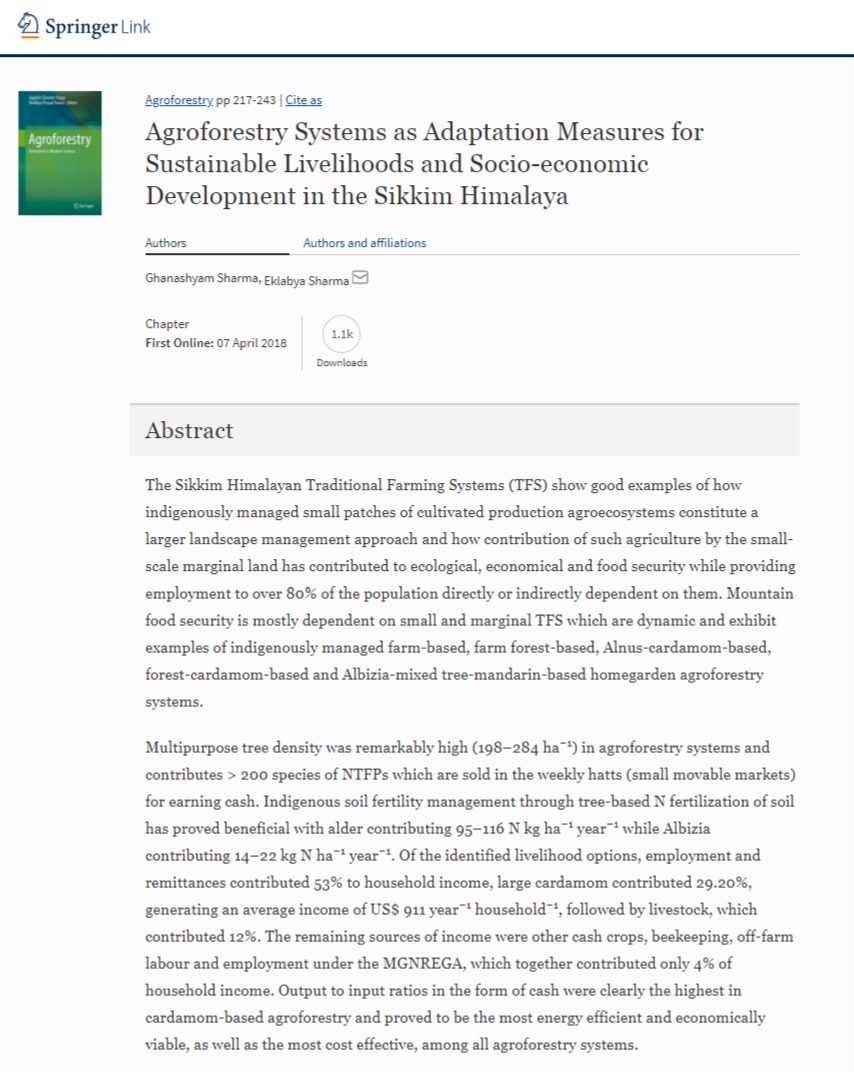
The Sikkim Himalayan Traditional Farming Systems (TFS) show good examples of how indigenously managed small patches of cultivated production agroecosystems constitute a larger landscape management approach and how contribution of such agriculture by the small-scale marginal land has contributed to ecological, economical and food security while providing employment to over 80% of the population directly or indirectly dependent on them. Mountain food security is mostly dependent on small and marginal TFS which are dynamic and exhibit examples of indigenously managed farm-based, farm forest-based, Alnus-cardamom-based, forest-cardamom-based and Albizia-mixed tree-mandarin-based homegarden agroforestry systems. Multipurpose tree density was remarkably high (198–284 ha−1) in agroforestry systems and contributes > 200 species of NTFPs which are sold in the weekly hatts (small movable markets) for earning cash. Indigenous soil fertility management through tree-based N fertilization of soil has proved beneficial with alder contributing 95–116 N kg ha−1 year−1 while Albizia contributing 14–22 kg N ha−1 year−1. Of the identified livelihood options, employment and remittances contributed 53% to household income, large cardamom contributed 29.20%, generating an average income of US$ 911 year−1 household−1, followed by livestock, which contributed 12%. The remaining sources of income were other cash crops, beekeeping, off-farm labour and employment under the MGNREGA, which together contributed only 4% of household income. Output to input ratios in the form of cash were clearly the highest in cardamom-based agroforestry and proved to be the most energy efficient and economically viable, as well as the most cost effective, among all agroforestry systems. Climate variation in the region has contributed to an unpredictable or erratic rainfall pattern, drying up of local springs and streams, species migration to higher elevations, shift of sowing and harvesting period of crops, emergence of invasive species and incidence of diseases/pests in crops as well as in fodder species. Under such circumstances, promotion of homegarden agroforestry systems through community innovations and investments would be a successive strategy for adaptation, mitigation and livelihood security. At the wake of climate scenarios and the pressure of globalization, revitalization of small and marginal farms and production agroecosystems, which emphasizes diversity, synergy, recycling and integration, and social processes that value community participation and empowerment, proves to be perhaps one of the only viable options to meet present and future food needs and adaptation to climate change. The “Organic Mission” of the Government of Sikkim is expected to enhance farmers’ livelihood strategies, particularly in areas under high ecological, climatic and economic stresses and risks.